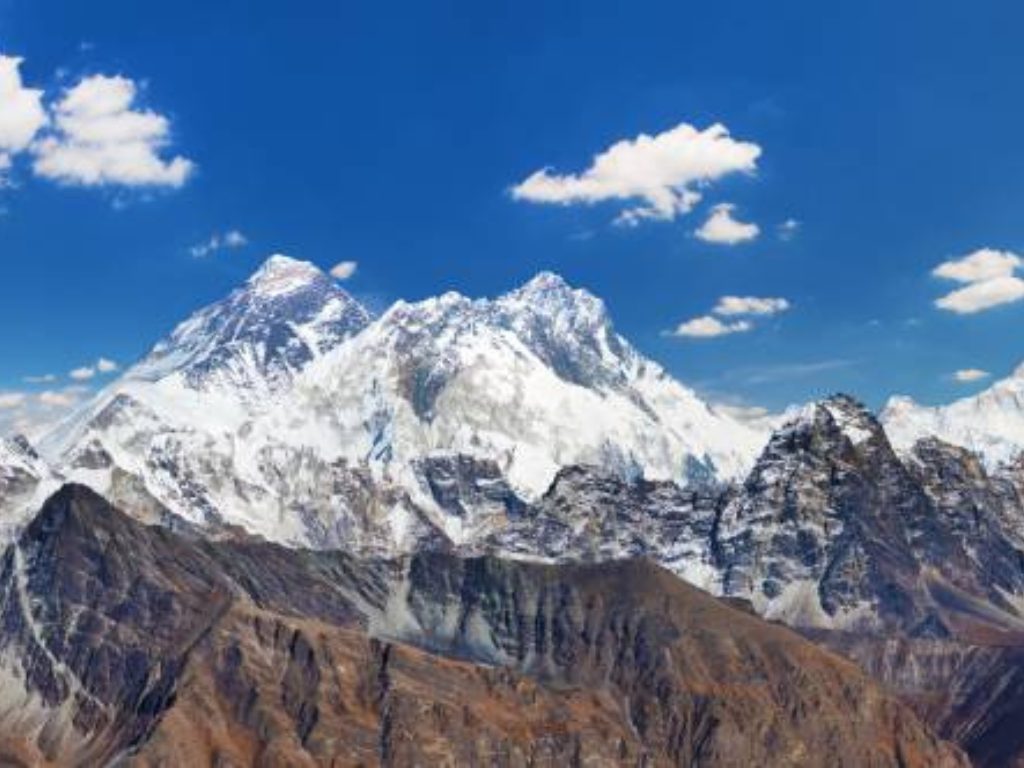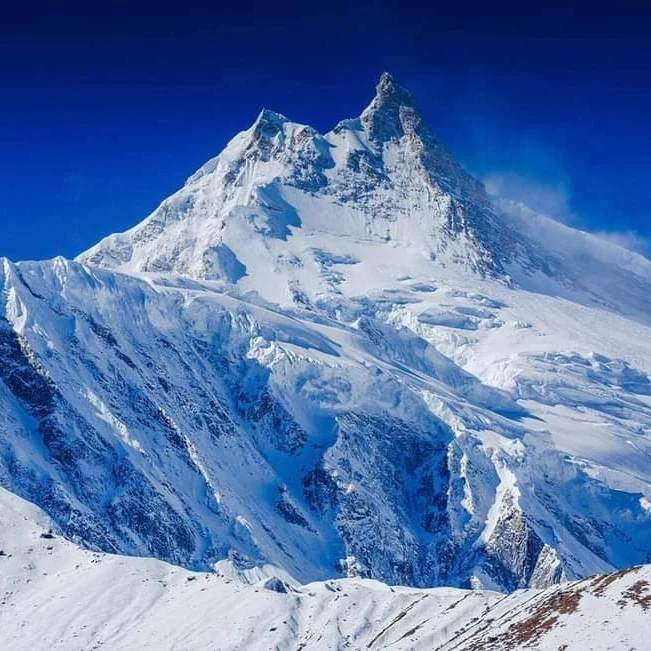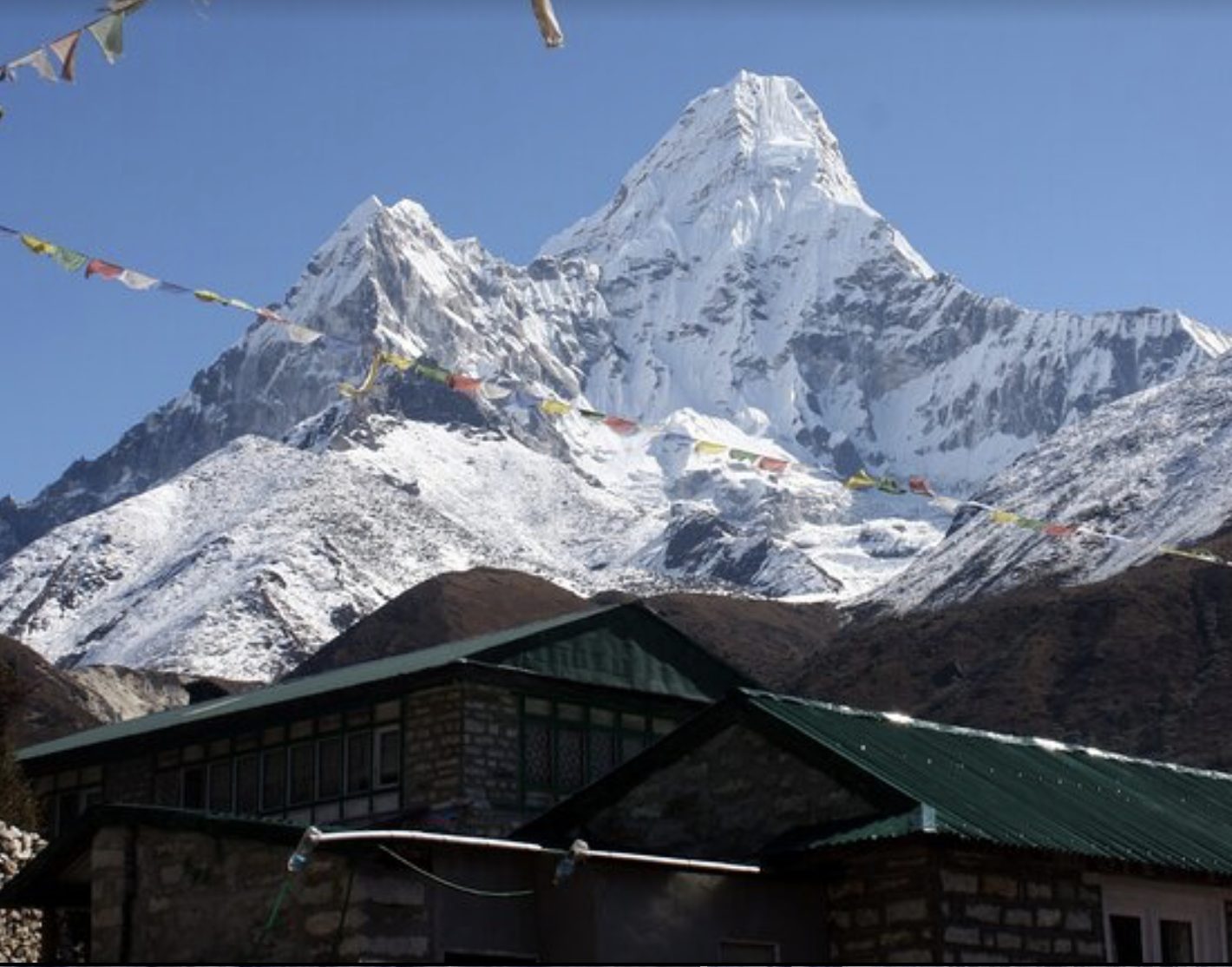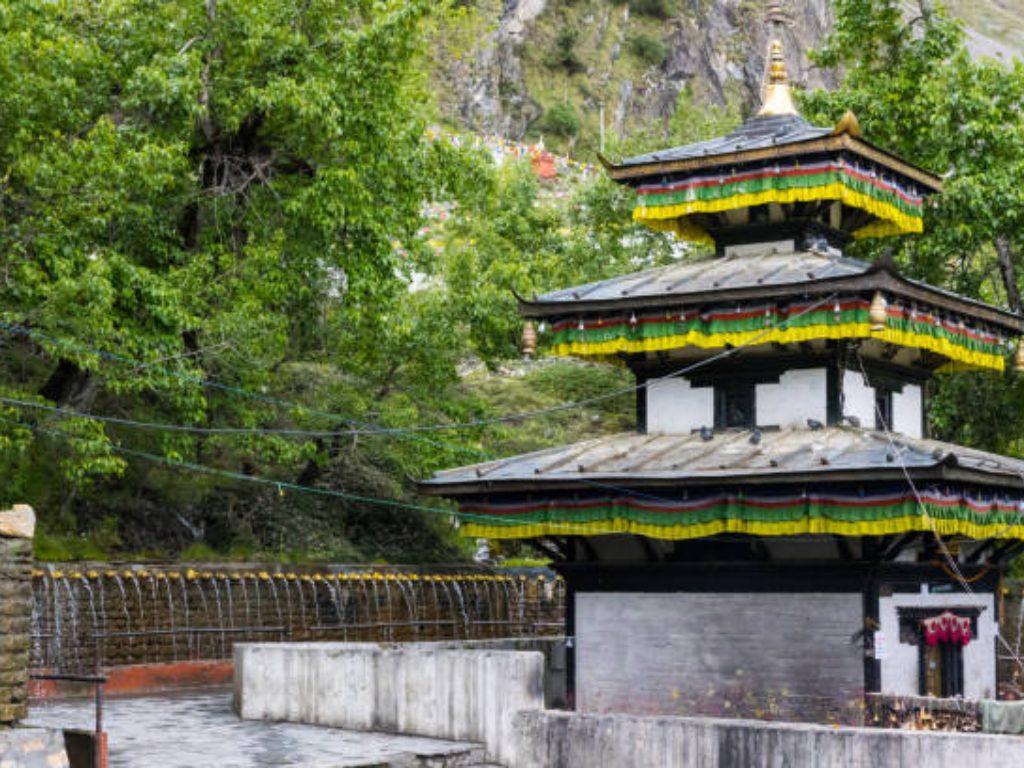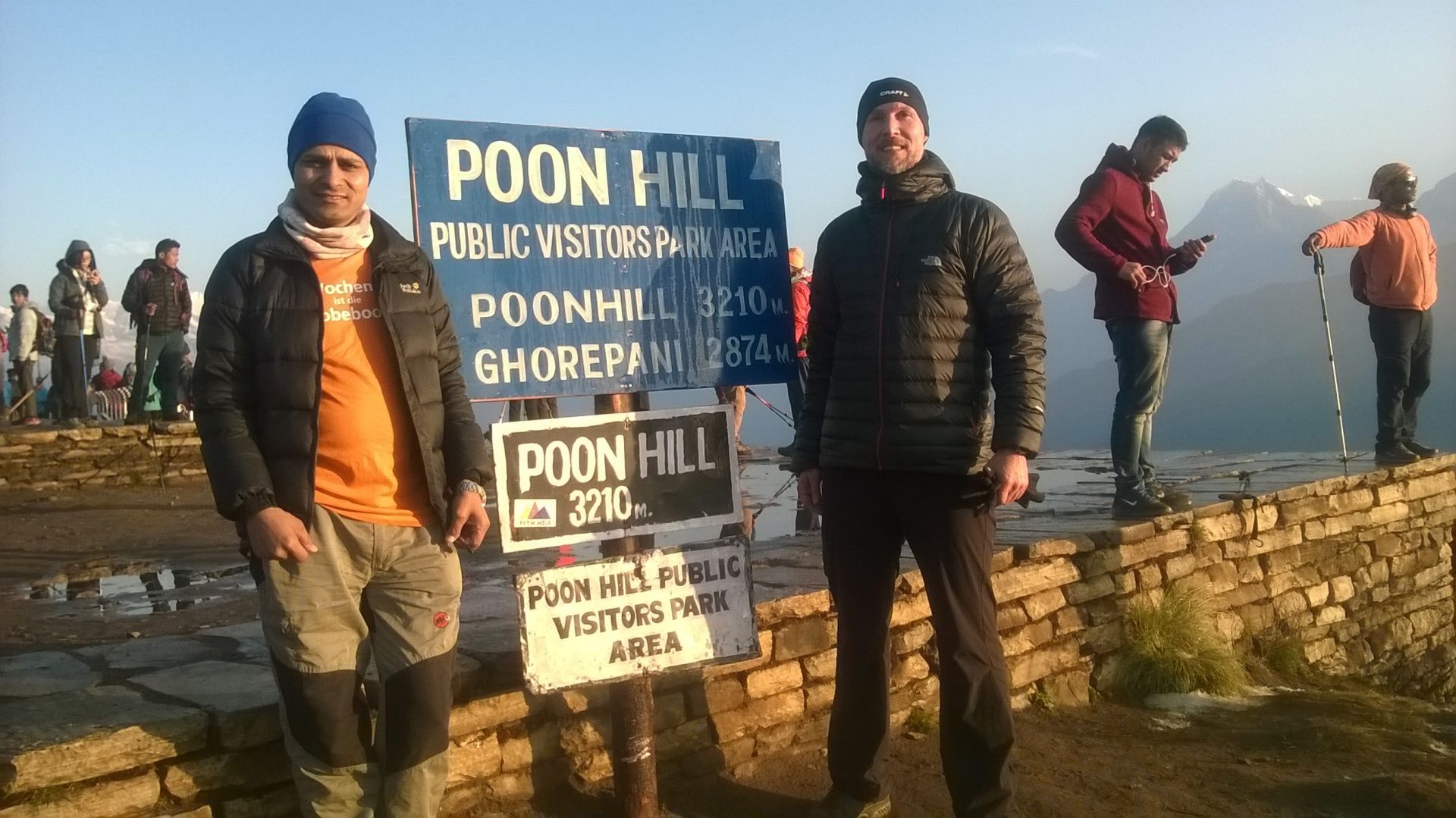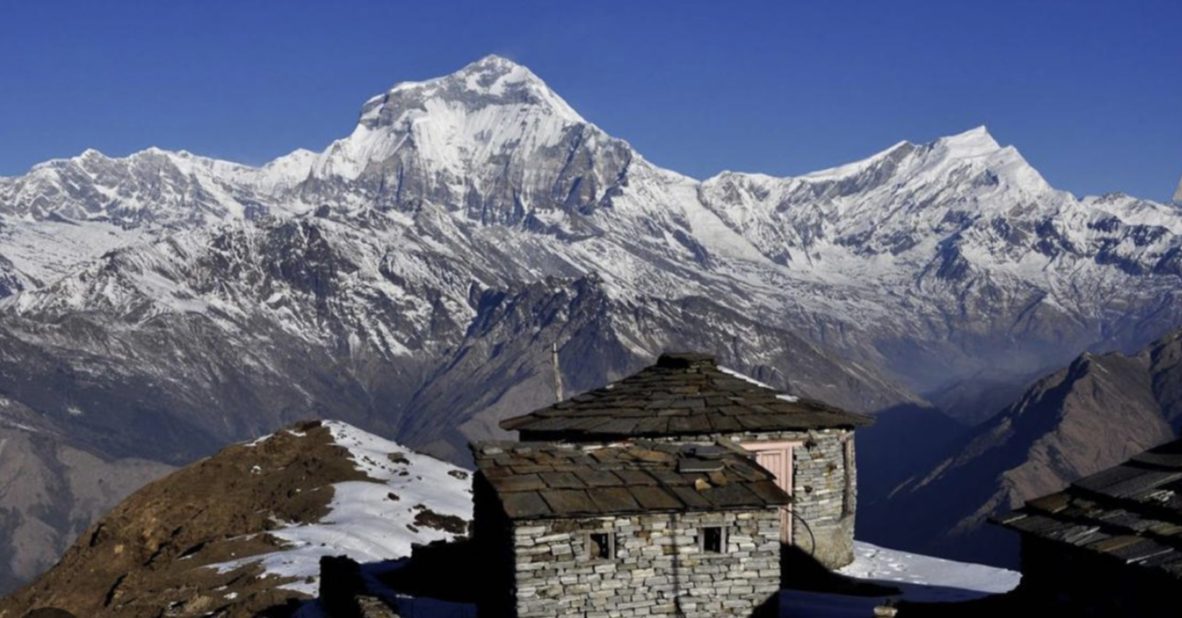Arun Valley with Everest Base Camp Trek, via Milke Danda Overview
Arun Valley with Everest Base Camp Trek, via Milke Danda is one of the most stunning trekking routes that combines the natural beauty of Arun Valley with the iconic Everest Base Camp. The private route begins in the peaceful Arun Valley, leading the trekkers through dense forests, vibrant local villages, and stunning landscapes which are far less crowded than typical trekking routes. The hike offers an opportunity to witness untainted beauty on the way to massive Everest. An Everest Base Camp hike via Milke Danda is an excellent means of experiencing the grandeur of the Himalayas and being immersed in local culture.
Arun Valley with Everest Base Camp Trek hike via Milke Danda is a combination of tough high-altitude hikes and visual splendor. Upon crossing Arun Valley, the trekkers reach the beautiful Milke Danda, from where they enjoy spectacular views of Everest and other surrounding peaks. The scenic ridge is a peaceful atmosphere free from the hustle and bustle of the popular trekking routes, giving the trekkers an opportunity to relax and enjoy the nature. Milke Danda’s high vantage points make it the most picturesque part of the entire trek, and therefore an experience you will never forget.
As you continue your journey from Milke Danda to Arun Valley with Everest Base Camp Trek, you will be awed by the dramatic scenery that changes as you approach the famous base camp. The challenging Milke Danda to Everest Base Camp ascent offers an unparalleled experience of reaching one of the world’s highest points. Combining the serene beauty of Arun Valley with the rugged grandeur of Everest, the Arun Valley with Everest Base Camp Trek, via Milke Danda offers an unparalleled trekking experience blending nature, culture, and personal achievement.
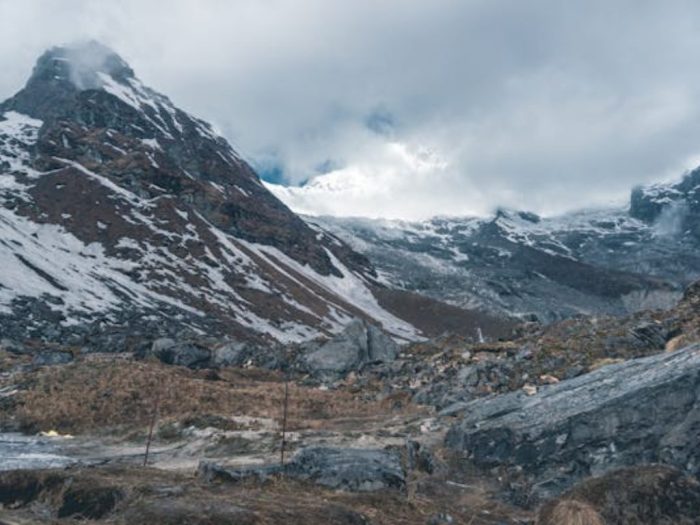
Difficulty of Arun Valley with Everest Base Camp Trek, via Milke Danda
Arun Valley with Everest Base Camp Trek, via Milke Danda is a moderate to challenging trek. The trek covers varied terrains, from thick forests to high-altitude ridge lines, and trekkers must be physically sound. The trek involves long, tough days of walking, particularly when climbing to the higher altitudes, which can make the trek demanding. As you draw closer to Everest Base Camp, the terrain becomes more rugged, and altitude problems, such as fatigue and breathlessness, may arise. However, with proper training and gradual acclimatization, trekkers can manage the physicality and enjoy every moment of this incredible experience.
The Arun Valley with Everest Base Camp Trek, via Milke Danda also offers the added challenge of high-altitude trekking, for which due care must be taken in acclimatization to avoid altitude sickness. Trekkers have to pace themselves and be mindful of their body’s signals. Though the trek is graded as difficult, the reward—stunning scenery, unique landscapes, and the sense of achievement of having reached Everest Base Camp—makes it an experience worth having. Proper physical preparation, the right equipment, and the right attitude will ensure an optimum experience of this adventure in the Arun Valley with Everest Base Camp Trek, via Milke Danda.
Travel Insurance During Trekking
Any trek in Nepal, including this Trek, needs travel insurance. The trek includes high-altitude trekking, which may be physically challenging and dangerous. Travel insurance can cover you financially in the event of an accident, a medical emergency, a flight cancellation or delay, or lost or stolen luggage. When buying travel insurance always ensure that it covers high- altitude trekking and emergency helicopter evacuation, as these can be expansive without insurance. Depending on your plan, you can also obtain additional coverage of activities like hiking, mountaineering and adventure sports.
Guide and Porters on Arun Valley with Everest Base Camp Trek, via Milke Danda
It’s always suggested to trek with a knowledgeable experienced licensed guide or join a trekking agency to assure safety and utilize your time in a best way.Your safety is our first priority. So our guide and porter are dedicated to making your experience of trekking in Nepal a memorable one without compromising your safety. Along with your safety we also focus on our guide and porter safety too. Notably, our guide and porter are provided with insurance facility. Porter will carry up to 10 kg or 15 kg per client.
If you wish , you may keep your clothing and items in a storage on room where you are stay on Kathmandu hotel. Moreover, according to Nepal tourism board all the trekkers are required to gain services of licensed trekking guide and to acquire (TIMS Cards) through authorized trekking agencies with the government of Nepal.
Significantly, Nepal Holiday Treks and Tours Pvt. Ltd. is a reliable and reputable company registered with the government of Nepal that can provide you helpful, friendly, English speaking with technically competent government authorized license holding guide and porter with their insurance. As they are highly experienced trekking guide prompt in safety performance and always carry essential safety equipments, first aid kids and gear.
Best season for Arun Valley with Everest Base Camp Trek, via Milke Danda
The best season to trek Arun Valley with Everest Base Camp Trek, over Milke Danda is spring (March to May) and autumn (September to November). The periods are the best weather times to trek the Himalayas. Spring is warm and sunny, with clear weather conditions that offer trekkers breathtaking views of the surrounding mountains. The autumn season is also favored due to the uniform weather and minimal rain, hence a safe and enjoyable hike. The paths in these months are also less susceptible to snowfall or heavy rainfall, and the scenery is picturesque with lush green foliage or golden hue.
Choosing the proper season for Arun Valley with Everest Base Camp Trek, via Milke Danda is critical to have a comfortable and fine experience. Both autumn and spring also give chances to appreciate local culture in the best manner since the climate facilitates it for people interaction from the villages on the trek. Whatever your motivation to visit the serene Arun Valley, trek through Milke Danda, or make it to the stunning Everest Base Camp, these seasons offer the most optimal window to make such an amazing trek.
Fitness/ Experience on Arun Valley with Everest Base Camp Trek
The Arun Valley with Everest Base Camp Trek, via Milke Danda requires a very good level of fitness and prior experience in trekking. The trek is of moderate to challenging nature, with significant altitude ascents, especially while approaching Everest Base Camp. Trekkers need to prepare for long days of walking with steep ascents and descents across diverse geography. Physical conditioning and experience in high-altitude treks are recommended to deal with the demands of this trek. Good stamina, endurance, and a positive attitude will make the experience worthwhile and enjoyable.
For seasoned trekkers, the Arun Valley with Everest Base Camp Trek, via Milke Danda offers a chance to push limits while experiencing the remote majesty of the Himalayas. If you are fairly new to trekking but physically fit, it is still possible to do this trek with proper preparation and by going at a moderate pace. But do pay attention to altitude acclimatization since the trek involves altitudes above 5,000 meters. Preparation through fitness training, comprising regular cardio and strength training, is required to undertake a successful expedition on Arun Valley with Everest Base Camp Trek, along Milke Danda.
Foods and lodging on trekking time
The accommodation in the mountains and remote villages are generally modest and basic. The room, shower and rest rooms are available in a twin- shared basis. The mountain teahouse provides rooms with just a bed, pillow, and blankets but the view is spectacular from the rooms. The standard lodge has two single bedrooms with mattresses, pillow, warm blankets, attached bathrooms and hot water. Teashops and lodges usually provide plentiful and delicious foods which suits the preferences of various trekkers such as Nepali foods, Indian, Italian, Tibetan and Continental food.
All the foods will be cooked by the local cook by using local vegetables so the taste would be very local. Moreover, you should definitely try some other local foods of Nepal such as Thakali Khana and momo, Dhindo and Gundruk, Sel roti, and Nepalese curd. During the trek, we will ensure accommodate you to the best available tea houses with great views, sceneries, and serve with organic, healthy and hygienic foods.
Altitude Sickness During on Arun Valley with Everest Base Camp Trek, via Milke Danda
Generally altitude sickness occurs when you travel to a high altitude too quickly. Headache, nausea, tiredness etc are the symptoms occur when your body tries to adjust to the lower air pressure and lower oxygen levels at high altitudes. When it comes to this illness, one should be pro-active and notify the guide as soon as possible.Here are some things you can do to prevent yourself from getting altitude sickness.
- Stop and rest where you are
- Do not go any higher for at least 24 to 48 hours
- Make sure you are drinking enough water
- Do not smoke, drink alcohol, or exercise
- Eating foods and drinking fluids that contain carbs such as bread, pasta, fruits, milk, rice, and so on.
Preventing Altitude Sickness (AMS):
- Rest Well: Ensure that you rest well before starting your trek.
- Stay Hydrated: Continue drinking plenty of water during the journey.
- Balanced Nutrition: Maintain the balance of salt and sugar through proper eating habits and not skipping meals.
- Keep Warm: Layer up to remain warm without profuse sweating.
- Controlled Breathing: Breathe deeply and steadily from your diaphragm to maximize lung capacity. Maintain a comfortable walking speed that will allow for controlled breathing. Nasal breathing avoids drying your throat—wearing a muff or scarf in high altitudes might be of use.
- Pace Yourself: It’s not a competition. Pace yourself with a maintainable and Server consistent pace instead of exhausting yourself too early and taking many rest stops. Stop and admire the stunning views.
Arun Valley with Everest Base Camp Trek, via Milke Danda Highlights
- Close up view of the world’s highest peak- Mt. Everest (8848 m) with a hike to Everest base camp (5364 m)
- Explore the highest Khumbu Glacier of the world and thrilling Khumbu Icefall
- We will provide you with a (20 degree sleeping bag) and a duffel bag for the trekking excursion, but you must return them after completing the trek.
- Kala Patthar- the highest elevation of trek offers incredible views of 8000 m mountains
- Visit the temperate highlands of the world’s highest, Sagarmatha National park.
- Makalu Barun National Park- a home to unique wildlife in the low subtropical plains
- Witness Salpa Pokhari- believed the origin of Kirant ancestors
- Amazing Namche Bazaar the gateway to the Everest region
- Observe a famous Buddhist monastery of Tengboche (Tengboche monastery)
- Passes through several villages, dense forests, monasteries, temples, rivers and streams and suspension bridges
- Interact with the different ethnic groups of people and experience their unique culture, traditions and language
- Arun valley impressive views of Mt. Everest and hundreds of mountain that can be viewed with naked eyes
- Milke Danda- the highest diversity of rhododendron flower species in Nepal
Important Notes
Nepal Holiday Treks and Tours Pvt. Ltd. has years of expertise in the field of Himalayan trekking and can curate unforgettable experiences for adventurers like you. In order for trekkers to have a really comfortable and pleasant Everest Base Camp Trek, we are offering different optional services as per your need.
Optional Add-Ons Available:
✅ Porter Service – USD $
Lighten your load and trek with ease! Our experienced porters can take up to 25 kg of luggage, which can be shared between two trekkers. Let the beauty of the landscape soak into you instead, without heavy gear.
✅ Kathmandu to Lukla Helicopter Flight – USD
Avoid the pain of regular flights and start your adventure with a helicopter ride from Kathmandu to Lukla. This option offers breathtaking aerial views of the Himalayas while saving you time.
✅ Lukla to Kathmandu Helicopter Flight – USD
Complete your trekking in style with a helicopter ride from Lukla back to Kathmandu. Ensuring a smooth return in comfort and with spectacular aerial views of the Everest Region, without risk of possible flight delays.
✅ Upgraded Accommodation – USD
Upgrade your trekking experience with upgraded lodges featuring attached bathrooms at key locations: Phakding (1 night), Namche (3 nights), Tyangboche (1 night), Dingboche (2 nights), and Lukla (1 night). Enjoy added comfort after long days on the trail.
✅ Extra Night in Kathmandu – USD /night
Arriving early or staying longer? Add extra nights at our partnered 3-star hotel in Kathmandu, including breakfast, to relax before or after your trek.
How to Customize Your Trek:
- Choose Your Trek Departure Date.
- Mention the Number of Travelers.
- Click on ‘Book Now’ or ‘Add to Cart.’
- Choose Your Required Add-on Options.
- Complete Your Booking and Payment.
Required Experience:
This trek is ideal for active trekkers who can hike 6 to 7 hours a day carrying a light daypack. On certain days, the trekking is longer and the altitude increases the difficulty level of trekking. The trails are generally good, but there could be boulder and uneven patches in between.
Itinerary and Schedule: We try to follow the itinerary planned; yet trekking in distant mountain regions means uncertainty. Factors such as weather and trekkers’ well-being may make readjustments necessary. Your guide and Sherpa crew will try to stick to the trail as designed but flexibility is a must. Your safety is our topmost priority and also to get you back to Kathmandu before your scheduled departure.
What will the temperature be like during trek?
Weather conditions can vary significantly depending on the season and can change rapidly, especially at higher elevations. If your trek takes you above 3,000m, you should be prepared for temperatures ranging from -10°C to 25°C in a single day. It’s essential to have proper protection against sun exposure and strong winds. For helpful weather insights, refer to reliable source. Feel free to reach out to us for a recommended packing list tailored to your trekking itinerary.
How much money should be we bring?
You’ll require Nepali Rupees for any expenditure not covered by your package itinerary. Such costs might include bottled water, night hot shower, extra snacks, extra hot drinks, repairing or replacing equipment, battery charging, souvenirs, and tips. In case you want to shop, Thamel is an excellent place to shop on your last day. You are welcome to come to our office prior to your trek for individual counsel and assistance with money exchange.
Electricity, telephone, and internet access are available at most lodges and guesthouses along the Chisapani Nagarkot Trek, but with some additional charges. While the trek itself does not have widespread access to electricity, many lodges rely on solar power or generators to provide energy. You can recharge your devices like cameras, mobiles, and laptops at these places, although it usually comes at an extra cost. If you need to make phone calls or access the internet, some accommodations offer limited telephone and Wi-Fi services. You can obtain an internet password from the lodge, but keep in mind that these services typically incur additional fees.
Fill your life with adventures, not things. Have stories to tell, not stuff to show. Hurry up! Adventure is waiting for you and mountains are calling you.
This trip is fully customization. Importantly, this trip is available on both a fixed departure and a private group basis. Moreover, we can also customize the trip as per your needs, please contact us at Whatsapp (+977-9843770916) or email us at [email protected]. Let us know how we can help you, and we will do our best to give you the best customer service you’ll get anywhere else.
Furthermore, Nepal holiday treks and tours Pvt. Ltd. is a reputable and reliable company serving relentlessly in the field of tourism to fulfill the dreams of diverse adventure seekers around the globe into reality where they can feel most alive. So, we recommend you to reserve seat for yourself by booking with us right away for a wonderful and unforgettable trip experience.
Arun Valley with Everest Base Camp Trek, via Milke Danda Itinerary
Expand allDay 1: Arrive in Kathmandu- Transfer to Hotel
Our office staff will warmly welcome you upon your arrival at the Tribhuvan International Airport, Kathmandu. Then, you will be transferred and checked into your hotel. Later on, our staff will inform you about the briefing time upon arrival. Stay overnight at hotel.
Day 2: Kathmandu to Basantapur, Biratnagar (flight 45min 4hrs drive)
Today, you will fly from Kathmandu to Basantapur, Biratnagar. The trail to Basantapur has beautiful
picturesque where you can stop by and explore the rushing Tamor River and take some memories with
you capturing in photographs with the majestic Namaste waterfall and rice farmland.
Day 3: Trek to Chauki (2640 m) - 5 to 6 hours )
In the next morning, you will have a quick visit to Basantapur. The locals from the area come to offer
handcrafted goods and gardening supplies. After breakfast, you will have an easy walk up into the lush
rhododendron forest through a path that goes to Chauki village. Along the trail to village, you will frequently pass tiny local tea shops and also can witness the Makalu and Kanchenjunga mountain ranges. Stay overnight at the guesthouse.
Day 4: Trek to Gupha Pokhari (2930) - 5 to 6 hours
In the morning, we will walk through the path that lead closer to the glorious Himalayas and the
rhododendron woodland. As we gradually ascend through the forest trail, you will be encounter with some
of the wild animals and also observe tiny herbs and plants. Stay overnight at the guest house.
Day 5: Trek to Milke Danda (3660 m) - 5 to 6 hours
Milke Danda is the Marvelous place, which offers you the glorious views of the Himalayas and amazing
topography. The majority of the people believe that Gupha Pokhari grants your wishes. Stay overnight at
the guesthouse.
Day 6: Exploration of Milke Danda
While exploring, you will see the astonishing views of the Everest, Makalu, and Kanchenjunga and the
eye- catching evergreen Milke Dabda. Similarly, rhododendron forest is the cherry on top of colorful hills.
Stay overnight at the guesthouse.
Day 7: Trek to Nundaki (3124 m) - 6 to 7 hours
It is a beautiful trail, where one can witness and admire the captivating views of the mountainous peaks.
When you trek down the road, you will go through shepherd’s tiny huts and the pasture lands. Stay
overnight at the guesthouse.
Day 8: Trek to Chainpur (1335 m) - 5 to 6 hours
Chainpur is a majestic trek that is relatively more accessible as we descend slowly. It is the enchanting
village which has vintage marketplace famous for various antique items. Stay overnight at the guesthouse.
Day 9: Trek to Tumlingtar (515 m) - 3 to 4 hours
As you trek to tumlingtar, you will walk across the path of crop fields where you can observe a diversity of
people from mixed cultures working in fields. You can also experience agricultural farmer lifestyle and their dedication towards their work.
Day 10: Trek to Gothe Bazaar (800 m) - 6 to 7 hours
The next morning, we will trek from Tumlingtar to Gothe Bazaar. The trail goes through Chewabesi
crossing a narrow suspension bridge over the Arun River. You will see mules carrying cardamom for tradein nearby towns. And then, continue trekking to a forested area with cash and food crops like cardamom, papaya, banana grown along the way. Before reaching Gothe Bazaar, the route follows a riverside trail after crossing a couple of bridges. Gothe Bazaar is a beautiful settlement inhabited primarily by the Gurung and Rai community, who sustain crop production. After settling down, you can interact with the local and explore their unique traditions, dress and language. Stay overnight at teahouses.
Day 11: Trek to Dobhane (1800 m) - 5 to 6 hours
After spending peaceful night at Gothe, we will trek along the bank of Benukhuwa Khola, passing through
the fields where locals have grown paddy, banana and citrus fruits. Crops are the major income source of
the people living in the area. Meanwhile, heading to the north river bank, you will come across a paper
factory that produces Nepali paper from a locally grown plant (LOKTA). Stay overnight at teahouses.
Day 12: Trek to SalpaPhedi (3000 m) - 5 to 6 hours
The trail to SalpaPhedi is generally flat, with occasional descents to the riverside. After crossing the rice
terrace fields and the small settlements into the subtropical forested trail, bamboo bridges and the
SanuKhola, we will reach SalpaPhedi. Once you reach there you can visit the nearby gompa and stupa.
Stay overnight at Salpa Phedi.
Day 13: Trek to Gudel (2400 m) crossing Salpa Pass (3350 m) - 6 to 7 hours
The day, we start our journey with a steep descent from SalpaPhedi walking through Irkhuwa and SanuKhola river. Then, you will ascend to higher elevations through rhododendron forest to reach
Thulophokte. Visit the small ChochenGompa where you can explore many beautiful mani walls along the
way with Buddhist prayers and drawings on them. From Gompa, Salpa pass is a few more steps that take you to Solukhumbu. Reaching at the top of the pass, you can view stunning Mt. DudhKunda and Makalu. You can also visit nearby Salpa Lake (3414 m) and the Shilicho viewpoint. From the pass, Sanam is a 2- hour descent to Sherpa village that lead towards Siare, a small settlement passing the rhododendron forest. Taking a left to descend, you will eventually reach a big village Gudel mainly inhabited by the Kulung tribe. The views of the Mt. Chamlang (7319 m) and Mera Peak (6476 m) is mesmerizing. Stay overnight at Gudel.
Day 14: Trek to Gai Kharka (2450 m) crossing Surkie La Pass (3100 m)- 5 to 6 hours
The next morning starts from across a bridge passing Hinku river that flows from Mera Peak. While moving 54 km ahead south of Mt. Everest, you will reach Bung village bordering the Hunku Drangka in the east, known for primarily inhabited by Rai community. Passing through small settlements best for growing rice in this fertile land, you will reach another beautiful village Khairaule where you pass a school and iron bridge to a small trail up the hill. Walking through stone steps that lead to rhododendron forest, you will come across a small stupa where the trail is decorated with mani walls. Then continuing to charikot, we move ahead to western course leading to Surkie La Pass. After enjoying the distant mountain views from the top of the pass and observing the colorful prayer flags and wonderful mani walls, you will take a descend down a steep path through forest into a yak grazing pasture called Gai Kharka. Overnights stay at Gai Kharka.
Day 15: Trek to Kharte (2600 m) crossing Pangmum La Pass (3350 m) - 6 to 7 hours
In this day, you will trek to Hinku Valley that takes you towards Dudh Koshi River Valley. The Pangmum La Pass is a relatively easy climb but before reaching the Pass, you have to cross a lot of ascend and
descend till the Hinku Khola River. After exploring the stunning views of Kusum Kanguru and Mera Peak,
you will continue to walk to Kharte. Stay overnight at Kharte.
Day 16: Trek to Phakding (2610 m) - 5 to 6 hours
You will enter the Dudh Koshi valley as you head towards Phakding village. On the way, you will witness
your first view of the snow- capped peaks such as Sherpa, kusum kangar, khumbila and gyachen kang.
Descending along the main jiri path, you will reach a small Puiyan village on the foot of a towering hill,
which is the gateway to the Mera Peak Trek. Before ascending to a high waterfall, you will follow the Dudh
Koshi River towards Chauri Karka. As it is also known as the breadbasket of the Khumbu region as the
grounds are fertile enough to grow food crops. The route eventually joins Phakding. Stay overnight at a
teahouse.
Day 17: Trek to Namche Bazaar (3440 m) - 6 to 7 hours
Early in the morning, taking a fresh air and walking beside the Koshi River passing through pine forest and astonishing views of Thamserku peak towering above the valley of Benkar is out of the world. Passing a long suspension bridge shared for trade where the donkeys and mules pass carrying a heavy load. Then
the trek continues to Monjo village a gateway to the Sagarmatha National Park. At the Monjo check point,
you must show your permits, documents and take an entrance ticket. Taking descend to the river crossing
a suspension bridge head to Jorsale village from where Mt. Everest is visible at a distance. After having
lunch at Jorsale, the trek begins to a steep forested area until you reach the confluence of the Dudh Koshi
and Bhote Koshi Rivers. Before reaching Namche Bazaar, you will ascend to Tope Danda, a vantage point
from where beautiful glimpse of Namche town is visible. Stay overnight at teahouse.
Day 18: Acclimatization day in Namche Bazaar
Namche Bazaar is the starting point of many Everest region treks and the busiest and the liveliest town in
the Khumbu region. Namche is filled with locals and traders from nearby villages who come to sell and buy various products. On your first acclimatization day after the long trek, have a delicious foods as there are many shops, bakeries, and restaurant where you can get yourself a decent pizza and espresso that you
might be carving. On this day if you like, you can explore the Namche Monastery and visit the famous
Khunde Hospital, set up by Sir Edmund Hillary. Similarly, you can also hike to a famous view point which is Everest view hotel for up- close views of Mt. Everest and Mt. Ama Dablam. Overnights stay in Namche
Bazaar.
Day 19: Trek to Tengboche (3860 m) visit Tengboche Monastery - 5 to 6 hours
Leaving Namche Bazaar, you will take the northern path towards Tengboche village. Today, you will walk
on the sandy Dudh Koshi River, walk past a flight of stone steps and observe some of the highest peaks in
the world and mesmerizing views of Mt. Everest, Mt. Ama Dablam, Nuptse and Lhotse. Then you will
continue walking into a forest towards a suspension bridge over the Phunki Tenga River, passing a rocky
pathway. Following the steep rocky route that leads to an army checkpoint and taking a steep climb from
there, you will reach the Tengboche village.
As you arrive, you can settle down and dropping your belongings at a teahouse, you will head to visit the Tengboche Monastery. It is the largest monastery in the Khumbu region where you can explore statues, stupas, paintings, mani walls, shrines, and prayer wheels in and outside the buildings. A visit to the monastery offers a precise depiction of the ancient architecture and heritages of the Buddhists and people of Sherpa community. Similarly, Ama Dablam views towering behind the monastery are extremely adorable that immediately catches your eyes to the breathtaking views of it. Stay overnight at Tengboche.
Day 20: Trek to Dingboche (4410 m) via Pangboche – 5 to 6 hours
After exploring the amazing Tengboche village, you will head to another beautiful and significant village of
Pangboche where tourists and local pilgrims come to visit the oldest Pangboche monastery in the Khumbu
region. Passing the home of local nuns and crossing Imja George, you will eventually reach Pangboche.
On the way you will witness many mountain goats/ rams climb on rugged cliff terrain in search of foods.
Keep walking to the Lobuche river trail proceeding to Sombare’s village from where you will reach
Dingboche in a couple of hours. Stay overnight at Dingboche.
Day 21: Acclimatization at Dingboche optional hike to Nagarjun Hill (5100 m)– 4 to 5 hours trek
In a 21th day of your trek this is the second acclimatization day at Dingboche to cope with the increasing
altitude and decreasing air pressure. It is the best if you take some rest but if you wish you can hike to a
nearby viewpoint. It is a short hike so, carry your small day pack and head to Nagarjun hill crossing the
5000 m mark, after having some late breakfast. The hike starts with steep climb on non- technical sections with loose rocks. It is suggested to take smaller steps and follow your guide. Within a minute walk, you will reach Nagarjun hill, which is known locally as Nankartshang, named after a Buddhist hermit. After taking some clips and enjoying the views, take a same path to Dingboche and take a rest. Stay overnight at Dingboche.
Day 22: Trek to Lobuche (4910 m) - 5 to 6 hours
Start the trek by heading to the foot of the Khumbu Glacier, one of the highest Glacier in the world and the
largest in Nepal which falls in the Lhotse- Nuptse ridge. Then continue to Dugla village for lunch. From
there, you will take the steep full of twists and turns climb to Thukla Pass. It is also known as the best for
hosting memorial stupas in honor of the brave mountaineers who had lost their lives in their expectations
of Everest. Among them, one of the memorial stones is alpinist Scott Fisher and his team members who
lost their lives in the 1996 climb. Stay overnight at Lobuche.
Day 23: Trek to Gorak Shep (5140 m) and hike Everest Base camp (5364 m) – 7 to 8 hours
The next day, the trail proceeds to Gorak Shep. As a long trek, followed by a hike to the much–awaited
Everest base camp will begin with making your way to Gorak Shep, taking small steps as the temperature
keeps dropping, and the trail gets tougher. Gorak Shep was the orginal base camp for Everest during the
Swiss Expedition in 1952 but to make the trail a little easier, the base camp was shifted near Everest that
gave a birth to new Everest base camp.
Leaving your all the belongings at the teahouse and carrying the essentials only, you will head on hike to
Everest base camp (5364 m/ 17594 ft). After walking an hour and a half in the rugged terrain with gravel,
icy slopes, and loose stones, you will reach in your destination Everest Base Camp. It is one of the most
exciting and memorable days of the entire Milke Danda along with Arun Valley to Everest base camp trek.
The welcoming views of the 8000 m mountains of the Khumbu region, dramatic views of the Khumbu
Glacier and Khumbu Icefall will wash away all of the tiredness. Notably, you are not able to see the top of
Mt. Everest from the base camp. After enjoying and collecting amazing experience, and a ton of memories
(photos), you will retrace your steps back to your teahouse in Gorak Shep. The way may be slippery due
to all the snow, so be careful when you take small steps. Stay overnight at Gorak Shep.
Day 24: Hike to Kala Patthar (5550 m), Trek to Pheriche (4240 m) – 6 to 7 hours
On this day, you will hike to Kala Patthar which means “black rock” as it is a ridge sitting on the southern
edge of Pumori Peak, the highest viewpoint of this trek at 5550 m/ 18209 ft. The peak of the highest
mountain in the world, Mt. Everest is clearly visible from there. Furthermore, the 360° glorious view of the surrounding gigantic mountains such as Nuptse (7861 m), Changtse (7543 m), Lhotse (8516 m), Cho Oyu (8188 m), and Pumori (7161 m) add more beauty to the hike. Therefore traveler does not simply complete the Everest Base Camp trek without hiking to Kala Patthar viewpoint. The reason might be to witness the top of Mt. Everest and explore the surrounding high mountains.
Day 25: Trek to Namche Bazaar (3440 m) – 7 to 8 hours
Following the Imja River towards Tenboche, continue your walk after lunch towards Namche Bazaar which is relatively easier and much faster trek than the other days. After a long hike in the icy Everest region, you can enjoy a warm bath at your teahouse and enjoy the café and bakery goods in Namche.
Day 26: Trek from Namche to Lukla (2840 m) – 6 to 7 hours
Walking on the stone steps towards a lush green forest, you will reach Pasang Lhamu Memorial Gate, the
entrance to Lukla. Enjoy your last day in Khumbu by interacting with locals, having locally brewed drinks
and enjoying authentic delicacies.
Day 27: Fly Lukla to Kathmandu (1400 m)– 35 minute flight
This is a last day of your Khumbu region trek. The flight to Kathmandu offers beautiful mountains views.
Upon the landing in Kathmandu, our team will help you to transfer in your hotel.
Day 28: Final Departure from Kathmandu
Our one of the member will drop you off at the Tribhuvan International Airport after breakfast on your final
day in Nepal. Thank you for hiring Nepal Holiday Treks and Tours Pvt. Ltd. we appreciate your business
and we’ll do our best to continue to give you the kind of service you need
If the above Everest Base Camp Trek itinerary does not meet your needs, we can design individualized travel plans based on your preferences and specifications.
Plan My TripArun Valley with Everest Base Camp Trek, via Milke Danda Cost Includes
- Airport pickup and hotel transfers by Private Vehicle.
- Three times Three meals a day- Breakfast, Lunch, Dinner and 3 cup’s of tea/Coffee a day during the trek.
- Accommodation in tea house during the trek.
- In a day time tea break with cookies every day.
- Seasonally fruits and desserts on the trek after dinner every day.
- You will be under observation with a pulse oximeter to have your oxygen levels and heart rate measured twice a day during the trek. This is to catch the signs of Altitude Mountain Sickness (AMS) early, thus making trekking safer.
- 3 nights accommodation in Kathmandu (3 star hotel) on the BB plan, 1 night before starting the trek and 1 night the day after returning from the trek.
- National park Trekking permits & local government permit and TIMS Card
- Nepal Holiday Treks and Tours, (-20 degree sleeping bag) and a duffel bag for the trekking, but you need to refund to the office after the trip.
- Domestic flight ticket to Lukla from Kathmandu including airport transportation.
- An experienced, helpful, knowledgeable, friendly, English speaking well trained, government license holder Guide with all his salary, food, Drinks, accommodation, equipment, transport, and insurance.
- Normal First aids kit box.
- Nepal Holiday Treks And Tours trip completion certificate from the company side.
- Arrangement of Emergency helicopter service (paid by your travel insurance company)
- All the government taxes and company operating charges
Arun Valley with Everest Base Camp Trek, via Milke Danda Cost Excludes
- International airfare and visa fees.
- Lunch and dinner in Kathmandu.
- Personal expenses of bar and beverage bills, wi-fi, hot shower, bottle of water, extra porters, laundry or any other things which are not mentioned by the company.
- Your trekking gears and extra nights in a certain destination.
- A strong, helpful, porters with proper safety equipment and walking equipment his salary, food, drinks, accommodation, insurance, (one porter for two people he will carry bag pack max 20-25kg).
- Your travel insurance which should include the emergency rescue.
- Tips for your guide and porters which is comparison.
- Entrance fees during the sightseeing.
- Extra expenses due to any event such as strikes, weather conditions, or flight delays.
Upcoming Departures
Customer Reviews
Write a ReviewArun Valley with Everest Base Camp Trek, via Milke Danda FAQs
Can I get accommodation in the lodge/tea house in the mountain area?
It depends on where are you trekking and which season will you be choosing to trek to determine the accommodation difficulty. Nepal between September and December or March to May it is difficult to get accommodation but if you have guide or porter with you they will call and reserve before you reach to the tea house. Otherwise in general you can get easily accommodation on cost 5 USD a night in a tea house based accommodation.
What will be the Walking path in the trek?
The trekking trails will be stone made steps most of the time and narrow going to the valleys and ridges as well as forest. Some of oath will be curious old but safe to walk. The trail in the mountain goes through the forests, bridges, villages, river side, field and so on.
What kind of food can we get to the mountain area?
There are many restaurants, and tea house up to the mountain now and they serve you Indian. Nepali, western all kind of foods in season time but if you trek there in off season time than you have to ask with the owner what they have but you can eat fresh food and clean.
Can I have tap water during the trek?
If you are trekking in lower loop below 3000 meters than you better to get bottle of water which you can get from every tea house along the way but if you are trekking over 3000 meters than you can have tap water but just to be safe you can bring purification tablets.
What kind of trekking gear should I bring?
Trekking gears should be quality one if you are going to climb peak, but if you are trekking below 4000 meters than normal trekking equipments will be enough such as slepping bags, down jackets, pair of sucks, pair of pant, warm hat, gloves, sun glass, water bottle, medicine, walking pools, water proof bags and jackets, rain coat etc. If you are hiring a porter you better to bring or buy here when you are in Kathmandu a duffel bag and 10 liter day bag for you to carry your important things.
Arun Valley with Everest Base Camp Trek, via Milke Danda Equipment Lists
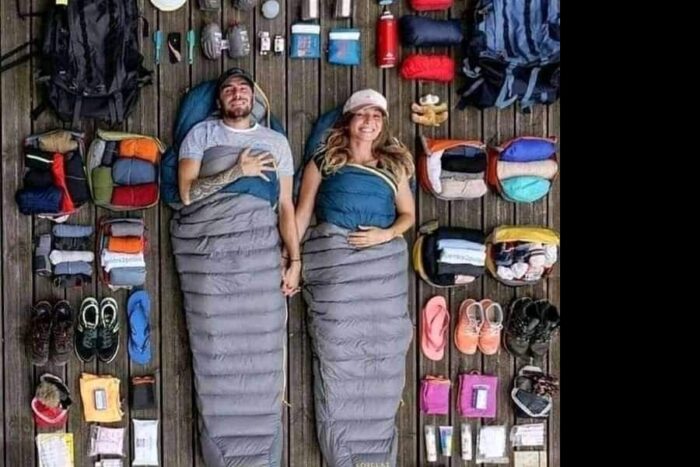 General info:
General info:
- Sleeping Bag and duffle bag: Four-season sleeping bag with a rating of -20°C by company after you have to refund on company.
- Insulated Jacket: A puffy and warm down jacket suitable for winter by company after you have to refund on company.
- Daypack: 25-30 liter backpack rain cover to carry one’s daily essentials
Clothing:
- Thermal base layers
- Trekking shirts (quick-dry)
- Fleece jacket and down jacket
- Waterproof jacket and pants
- Trekking trousers
- Gloves (inner and outer)
- Warm hat and sun hat
- Trekking socks
Footwear:
- Sturdy trekking boots
- Camp shoes/sandals
- Gaiters (optional)
Accessories:
- Trekking poles
- Backpack (50-60L) and daypack (20-30L)
- Sunglasses (UV protection)
- Headlamp with extra batteries
- Water bottles and purification tablets
Similar Tours
Short Manaslu Tsum Valley Trek
An 17 days trek, the Short Manaslu and Tsum Valley Trek engages trekkers to an adventure close to Mt....
Gokhyo-Renjola Pass trek
Your getaway from the typical trekking route to Everest Base Camp is the Gokyo Renjo-La Pass Trekking. This trekking...
Jomsom Muktinath Trek
Nepal is a stunning country in the Himalayas with magnificent mountains. These mountains’ foothills make for ideal walking terrain....
Ghorepani-Poonhill-Ghandruk Trek
The sheer grandeur of Nepal’s many landscapes and geographical features makes it unimaginably beautiful. There are many interesting, quaint,...
Khopra Danda Trek with Khayer Lake
One of the most beautiful trekking routes in the Annapurna region is the Khopra Danda Trek. For trekkers who...

